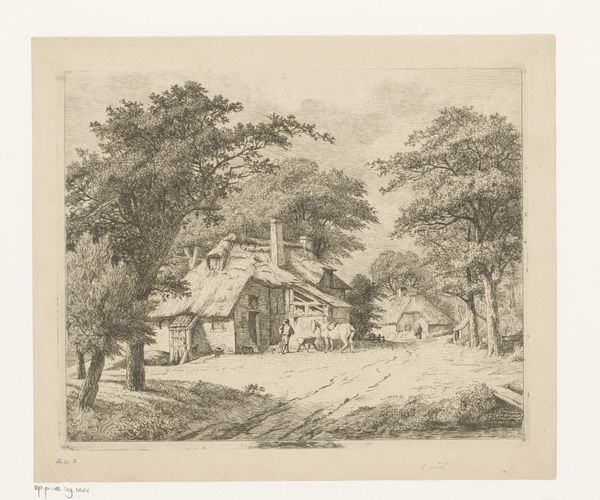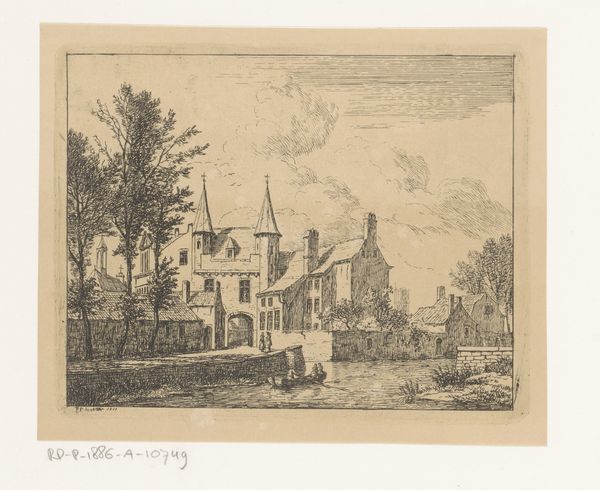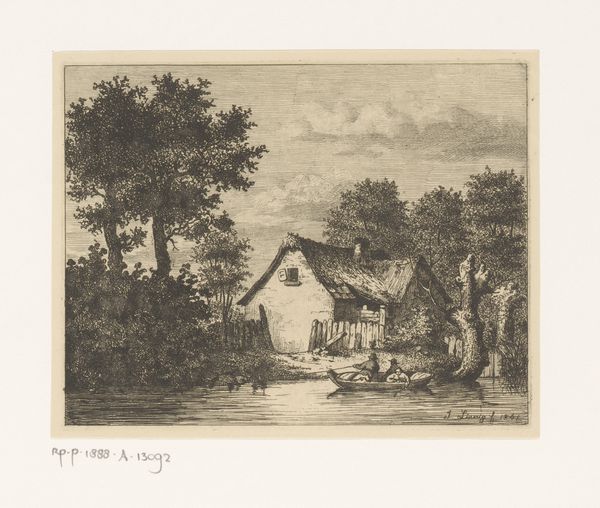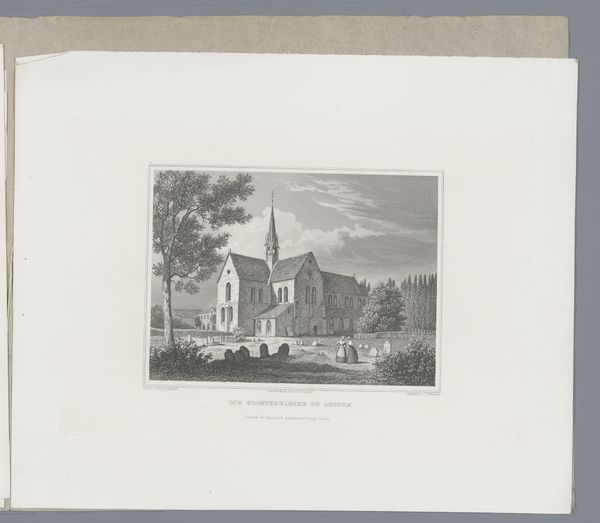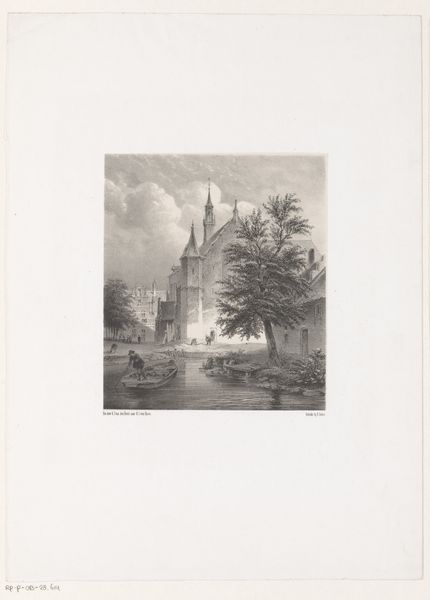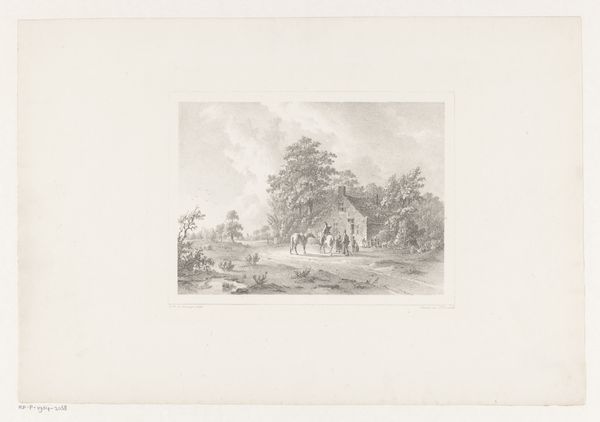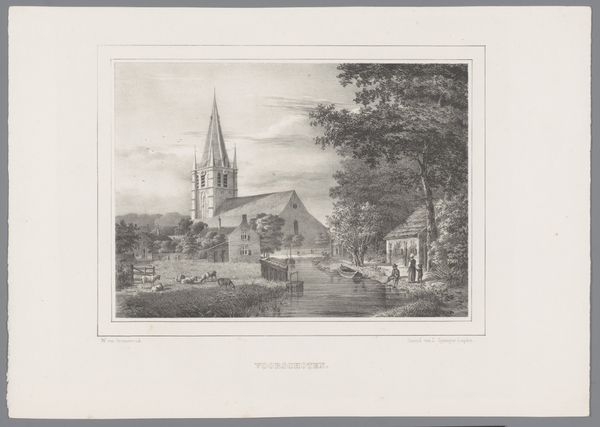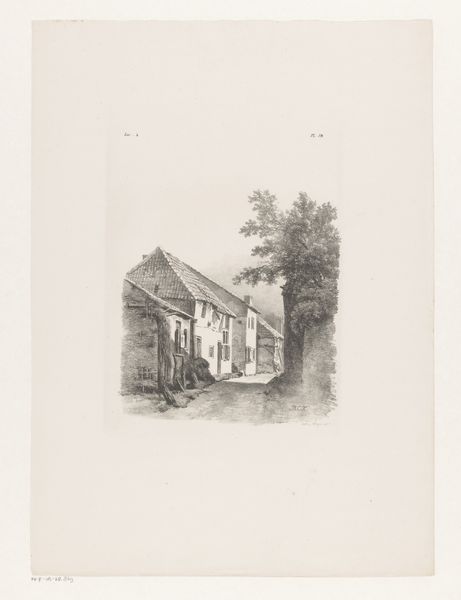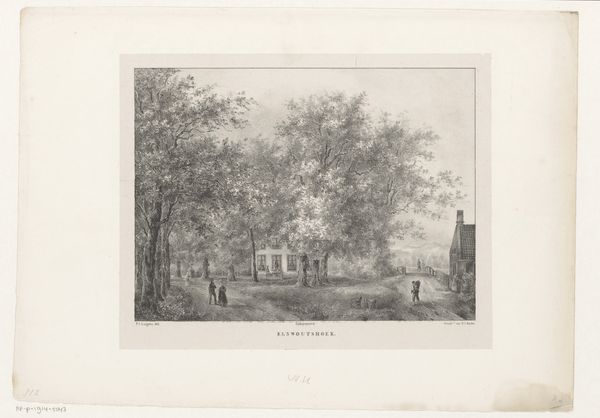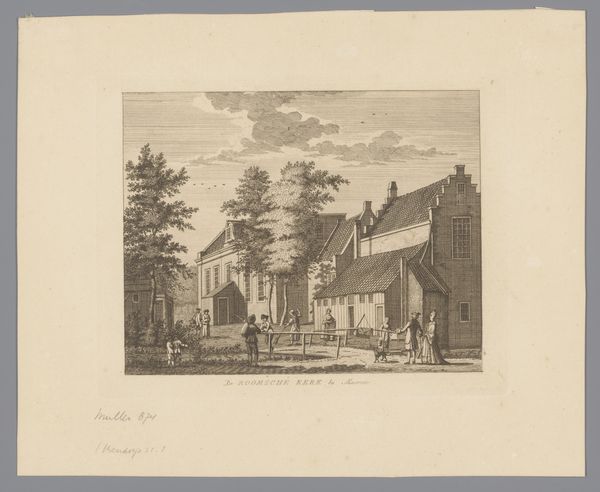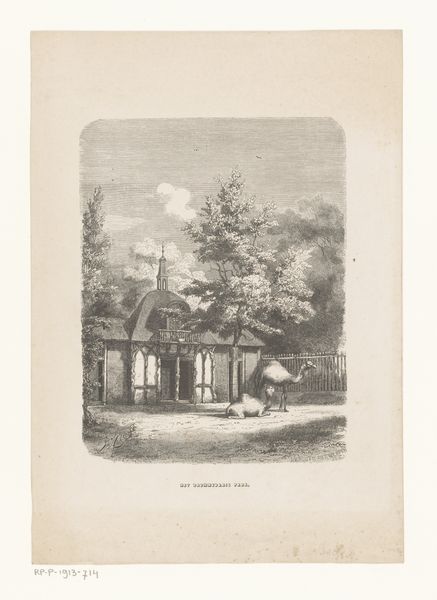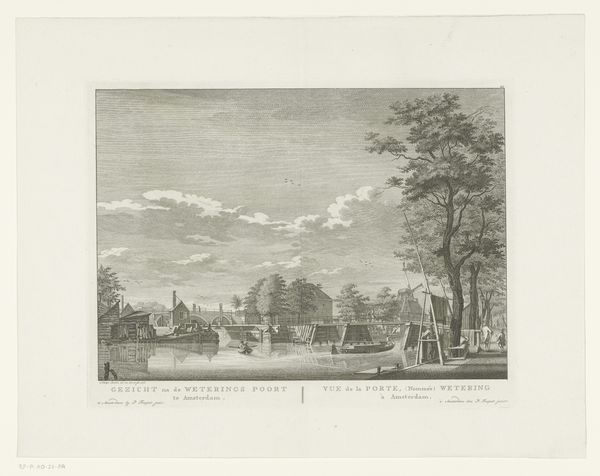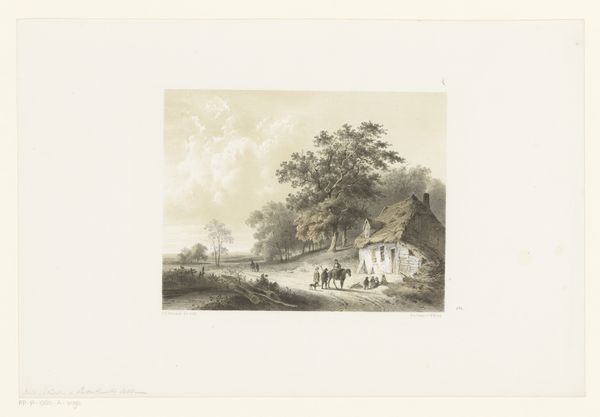
print, etching
# print
#
etching
#
landscape
#
romanticism
#
cityscape
#
realism
Dimensions: height 192 mm, width 208 mm
Copyright: Rijks Museum: Open Domain
Editor: So, here we have Jean Théodore Joseph Linnig’s 1849 etching, "Grenspaal van Antwerpse jurisdictie in Dambrugge"—a boundary marker in a small cityscape. It has this quiet, almost melancholic feeling. What strikes you most about it? Curator: Well, it's fascinating how Linnig situates this border marker within a seemingly tranquil, even picturesque, scene. It compels us to think about what these "borders" really mean, historically. Who benefits from them? Who is excluded? Editor: That’s a good point. It feels almost unremarkable until you really consider it. Curator: Exactly. The boundary marker itself is a symbol of power and control, quietly asserting authority. Consider the act of demarcation in the 19th century, as nationalist ideologies gained traction and colonialism expanded. Mapping, borders, jurisdiction - they all reinforce systems of power. Can you see any implicit tension here? Editor: Hmm… the dog seems to be going outside the boundaries. Maybe the boundary is more fluid that we expect? Curator: An astute observation. Boundaries are never as fixed or absolute as those in power would have us believe. It encourages critical consideration of how landscapes become sites of negotiation, resistance, and control. It encourages questions about class, belonging, and ownership. Editor: This etching initially seemed like a simple depiction of a place, but you’ve helped me realize it speaks to much bigger social and political ideas. Curator: Art is so important because it prompts these critical reflections. This is so much more than just ink on paper; it is about the historical construction of place and power!
Comments
No comments
Be the first to comment and join the conversation on the ultimate creative platform.
